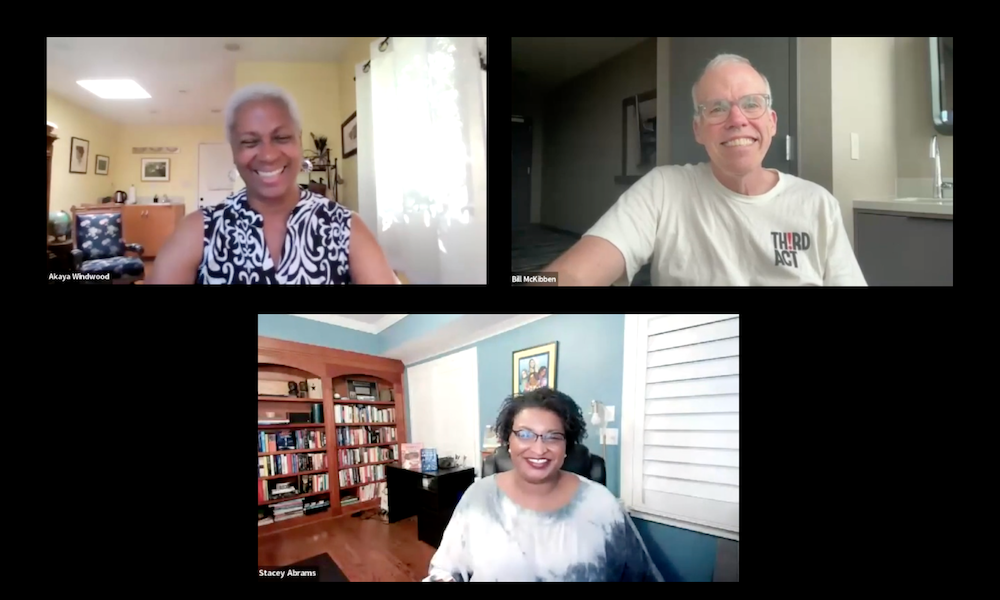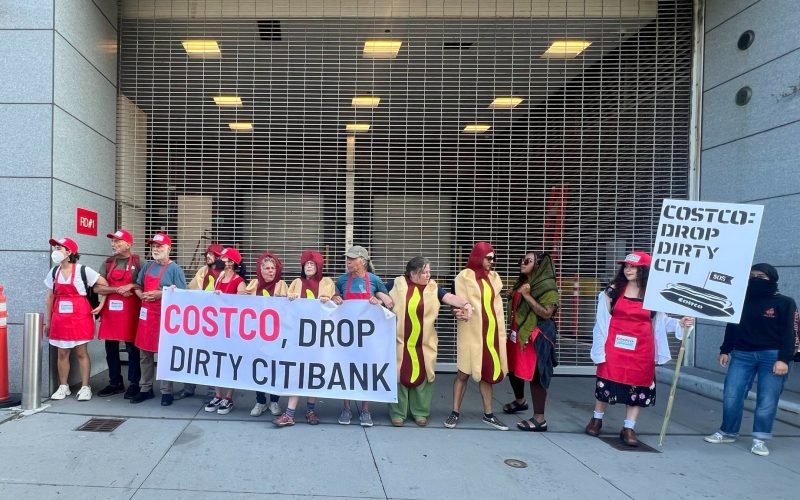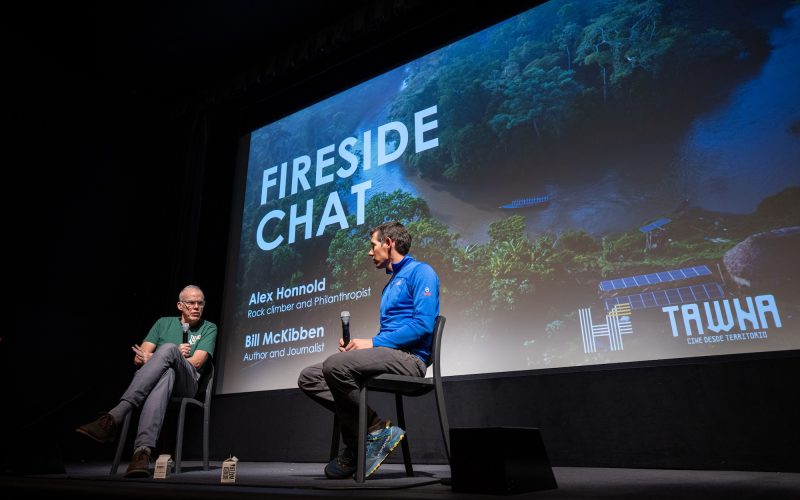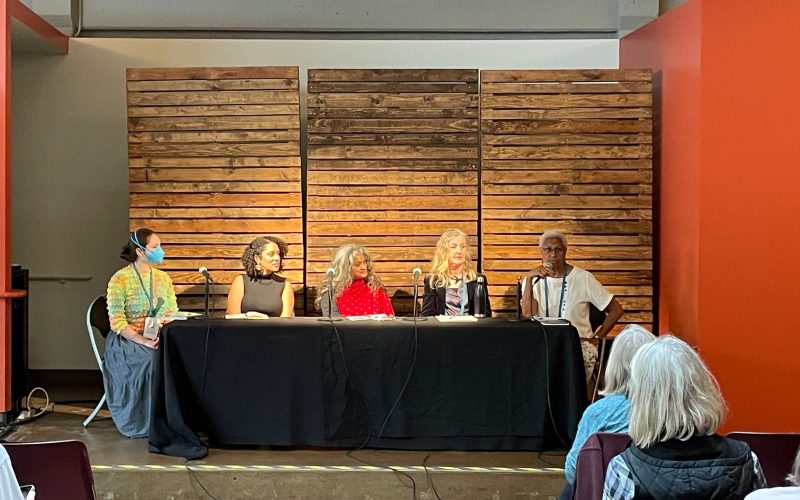
On July 9, we hosted our all-in call with political leader and author Stacey Abrams, as our featured speaker, joined in conversation with Third Act Lead Advisor Akaya Windwood, and Third Act Founder Bill McKibben. Keep reading for the video and highlights from the event.
Stacey Abrams In Conversation with Akaya Windwood and Bill McKibben
Below are excerpts from the conversation, edited for clarity and brevity.
Akaya: People are scared. They’re hopeful. They’re scared to be hopeful. They’re despairing. They’re wary. A lot of people’s hair is on fire right now. I’m going to ask you to help us make sense of this political moment. I’m asking for your wisdom more than your strategy. What would you say to folks who are trying to navigate these very turbulent waters over the next four months?
Stacey: I grew up in Gulfport, Mississippi. I’m the daughter of two people who were civil rights activists as children. My dad was arrested when he was 14 for registering black people to vote. We like to tease him that my mom was doing the same work on the other side of town. She just managed not to get caught. I grew up with people who lived in some of the darkest moments in our recent history. And they are not the darkest. Part of what I am constantly reminded about is not that we do comparative misery, but that we have proof of success. We make it through. It is hard, it is arduous, it is frustrating. It is often profoundly stupid, but it is survivable. Third Act, by its very nature, proves that we can make it through you. You exist because thousands of people have made it through despite how tough, hard, impenetrable and inexorable the moment felt.
In terms of our current moment, I like to remind people that there’s punditry about voters and then there’s the reality. Voters are people. They get a title around election time, but they’re people the whole time and people make decisions based on self-interest, community, and zeitgeist. But zeitgeist has the least effect. We amplify it and like to pretend that it changes everything, but they’re typically structural realities that motivate, block, or call us to question.
Regardless of what you think the answer should be, let me tell you what the reality is: there is not a human who watched that debate and thought, that man is old and feeble. I prefer the bombastic fascist liar, because anyone who decided to watch the debate already came to the debate with what they wanted to see. Debates are not about changing minds. Debates are confirmation bias in action. What we think we want is what we go to see and then we judge the outcome based on what we thought we would get. If winning a debate made you a victor, we’d have a whole different slew of people who held office and a whole lot of folks who never got the job. We cannot underestimate what we’re navigating, but we also can’t give it so much credence that it blinds us to everything else.
It’s the connectivity of voting that draws me. It is the connection point of organizing that animates me.
Number two: Swing voters are not quite a myth, but they are not as potent as we’d like them to be. This goes back to the issue of self-interest. There’s an alchemy to a swing voter, to someone whose political values shift so dramatically that they can go from one set of principles and values to another. If you can figure out that kind of pendulum swing, God bless you because almost no one else has. And so, to the extent to which we focus our attention and put all of our hopes into someone whose own internal compass is sitting over a magnetic pole, we are going to be in trouble. Our responsibility is to not worry about the things we can’t fix, but to focus on the things we can.
Our challenge is not those for whom there is no decision or those who refuse to make a decision. Our challenge is those who don’t think they have the right to a decision. Those are typically low-to-mid propensity voters and they exist because it’s kind of a pox on both your houses or my life is so hard that I don’t have time to think about this far off idea that could change things. Our responsibility and it is the core I think of what you do is to connect the dots to say that the current misery, worry, and harm can be solved with this person with this action. Don’t do it for anybody but yourself. And if you do it for yourself, you help other people.
It’s the connectivity of voting that draws me. It is the connection point of organizing that animates me. I can’t fix stupid. I can’t fix self-interest. What I can do though is make sure you have sufficient information and that it is not a lecture. It is information that helps you make a decision and that decision is often not, do I vote for this guy or that guy? It’s, do I vote or not? We can solve the question, do I vote or not? It is not a question of changing fundamental core belief systems.
When we tell people what’s in it for them, it helps them relax enough to see what they can do for everyone else.
I’ll wrap with this: My parents are pastors now. My mom was a librarian. My dad was a shipyard worker, but they eventually were called into the ministry. My parents’ job is to fix people’s souls. I don’t have that kind of time, energy, or capacity. So I work on behavior. Behavior can change and people change their behavior when the new action makes their lives better. So our job is to explain why the act of voting will make their lives better, not in the esoteric and not in the abstract, but in the concrete way of here’s what tomorrow can look like and here’s what’s gonna happen if you don’t take action.
Akaya: I’m going to push back on you, Stacey, because actually you a minister. You bring a medicine to the world that it needs. I’ve watched you for many years. So thank you for that.
Bill: Amen, amen. As a Sunday school teacher. I concur. I want to talk for a moment not about getting people to vote, but about getting people to change what’s in their house. You’ve taken on this work at Rewiring America, whose goal is nothing less than taking 140 million homes in America and transforming what’s in the basement, kitchen, garage. And that may be the most important work that there ever was given the temperatures around the world. I’m curious about how the conversations that you’ve learned to have over the years about motivating people to vote play into your strategy for how to motivate people to change out their appliances.
Stacey: For some it seems bit jarring that I would go from voting rights to climate. To me, it’s all of a piece and it’s actually been a part of who I am. As I said earlier, I grew up in Mississippi, near Cancer Alley in Louisiana. I used to have to drive through it to go and debate in high school. In college, I did my undergrad thesis on environmental justice. I interned for the EPA two summers, one for the Environmental Criteria assessment office in North Carolina and then for the newly created Office of Environmental Justice under Bill Clinton in 1995. Climate is a democracy issue. The reason we have democracy is because people want their lives to be better and we know that we’ve got to work together to make it so.
What we breathe and how we live is absolutely a question of the kind of government we have. As with any other issue, I think of voting not as an abstract construct, but as an activity into which I pour my efforts and about which I have to be concerned. If I don’t vote for the right person, the things that happen to me and my community are directly connected to whether I took that step. I can’t guarantee that they will do what I need them to do, but I’m pretty certain they won’t if I don’t speak up. And so when I talk about the connectivity between electrification and democracy, you don’t have to divide it up. It’s the same thing.
Climate is a democracy issue. The reason we have democracy is because people want their lives to be better and we know that we’ve got to work together to make it so.
If you think that your community is getting the short end of the stick, we know that 42% of all energy related emissions come from decisions made around the kitchen table. If you want your community to be cooler or to have access to lower bills, you’ve got to solve for what’s in your house. 58% is happening outside, but 42% is within your control. If you want your bill to go down or the temperature to go down or your kids to be able to breathe easier, then this is a moment where the government’s going to give you money to make your life better. Not only are they going to give you money, but they’re actually targeting the people they’ve ignored for so very long. There’s 65 million who would benefit for roughly $2,600 to $2,900 in annual savings and 36 million of those people are low to moderate income.
Part of the way you tell the story is not to say there’s this abstract construct of carbon emissions. You say, here’s the reality: when you turn off your stove if you have an induction stove, it’s unlikely your kid’s gonna burn their hand. If your HVAC system isn’t cool enough and you upgrade to this new one, you’ll save money and be cooler. If your heat pump takes too long to heat your water in the winter, get this, save money and it’ll be better.
I lean into the selfishness. I think it is a selfish act that just happens to have community benefit and I don’t shy away from it. When we tell people what’s in it for them, it helps them relax enough to see what they can do for everyone else.
Akaya: Girl, bring it. So I noticed that in your spare time you write romance novels and you can imagine there are a lot of other things and I found myself the other day, saying, wait a minute, let’s connect the dots. How do romance and climate fit together?
Stacey: I write a lot of different things. The reason I put it out there is that when people find I write, they know my Selena Montgomery, but my editors want people to know that there’s also a whole legal thriller universe I’ve created too. But coming back to my very first romance novel, Rules of Engagement. It got published in 2000. Its premise came from my ex-boyfriend’s dissertation. We’re friends now, but at the time, we were still in an awkward place. He wrote about micro zeolites. They are chemicals that can absorb other chemicals without reacting. At the time I was doing work and thinking about environmental justice issues on the global scale, particularly developing countries that were being rushed through the industrialization stage, because we finally realized it was going to kill us all. The idea behind this book was what if you could use micro zeolite technology to clean the environment.
Even my first novel was about environmental justice. It was about how we clean the climate. It was also a romance novel that uses my ex-boyfriend’s dissertation. We were still a little testy at the time so he’s in prison in the book, but that’s a whole other story. It was a bad breakup. We’re friends now. For me, romance is about understanding that the fairy tale ending is gonna take a lot of dragons and they’re going to be misunderstandings and miscommunication. You’re not always going to like the person you love and you’ve got to find a way to navigate, but also to reconcile your differences.
When you think about what we have to do in this climate conversation, people have hardened beliefs and they’ve got backstories. We don’t get to know the whole back story. When you read a romance novel, when you read a novel, you come into the middle of the story, but you’ve got to bring all of that baggage with you. And as a writer, part of my job is to give you enough information that you can empathize with both that you cheer for their success, but that you also feel the tension of their trial and that’s what we’re in right now.
We’re in the tension of trial. People know what we want, but they don’t necessarily believe it’s going to happen. You’ve got to give them a reason to keep hoping and you got to give them a reason to keep trying. Romance is one of the hardest genres I write because if people already know the ending, how do you keep them reading? By making sure that at every moment they feel compassion, interest, and a little bit of mystery about what can happen next.



